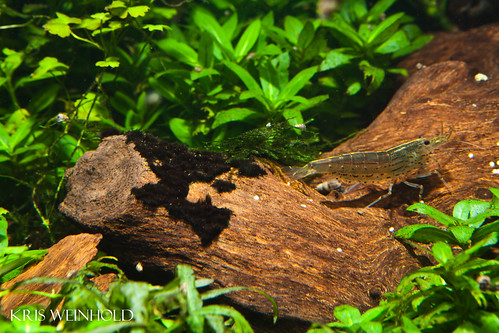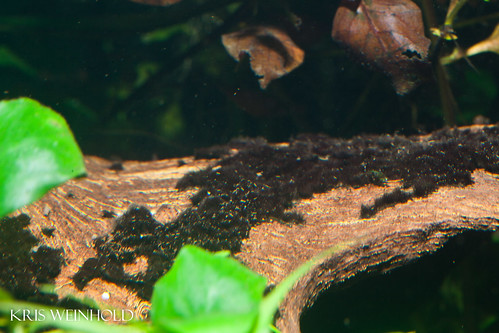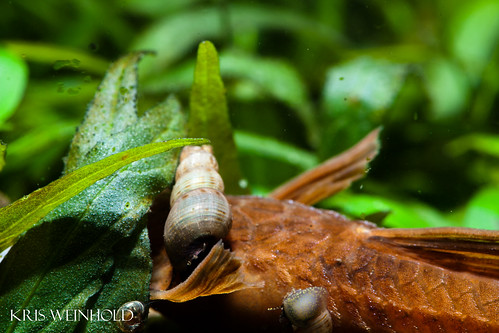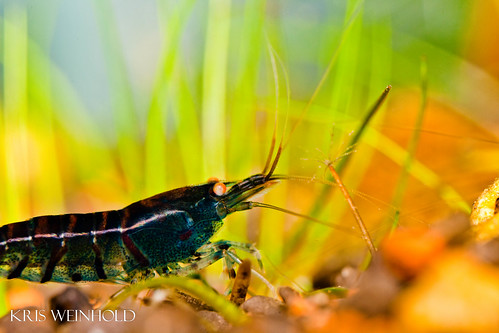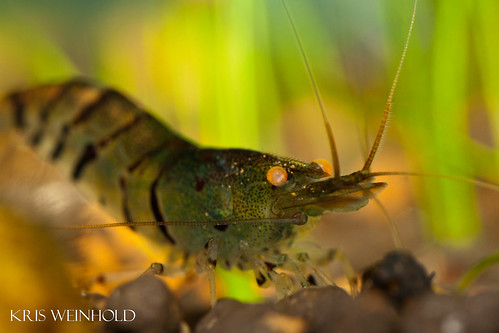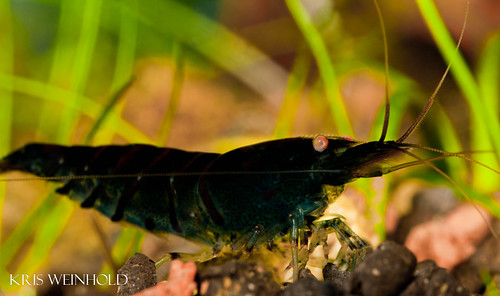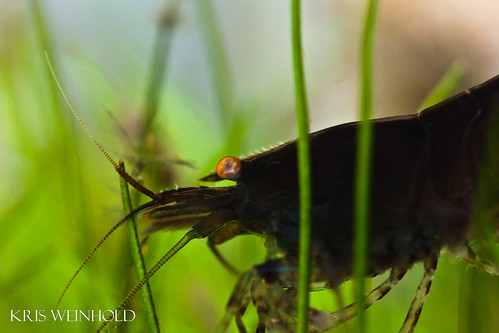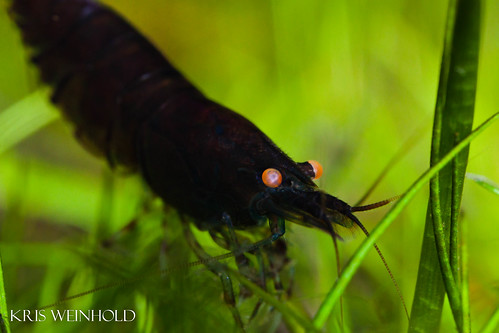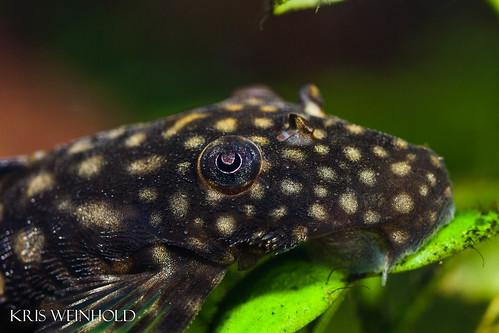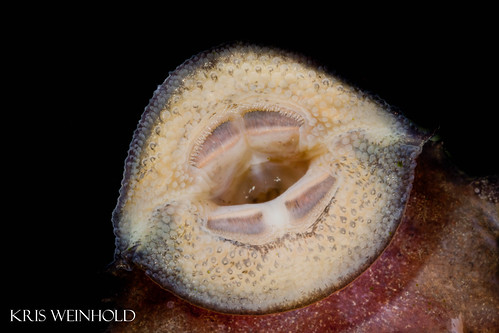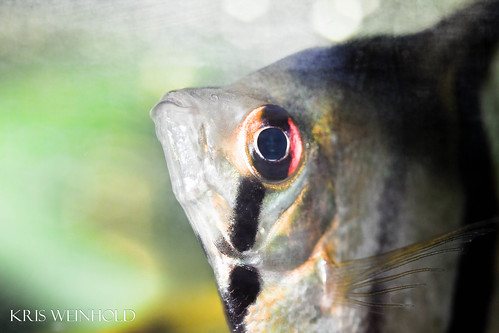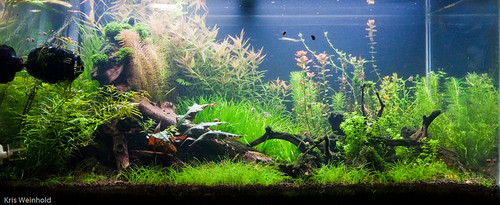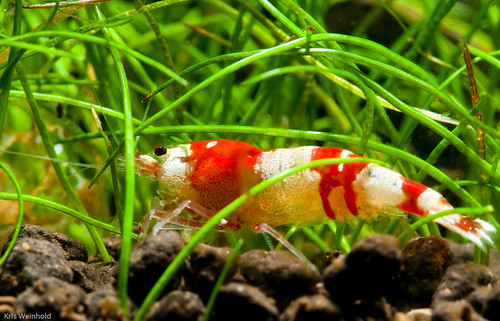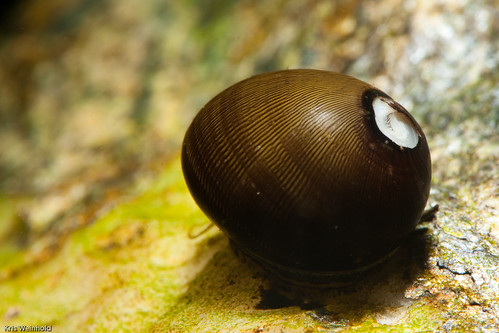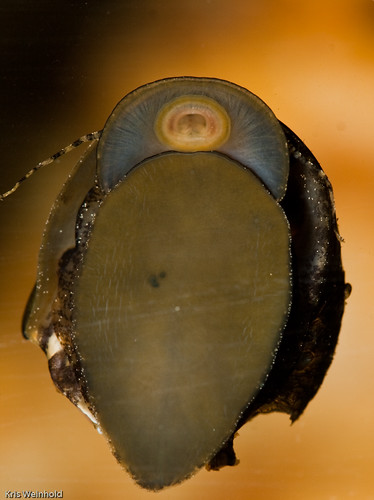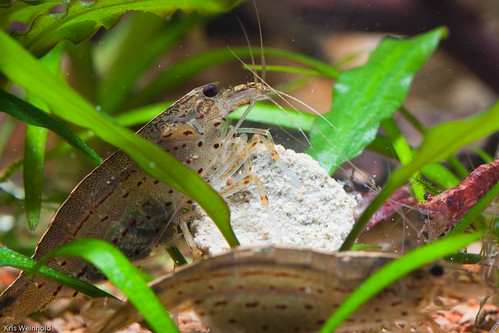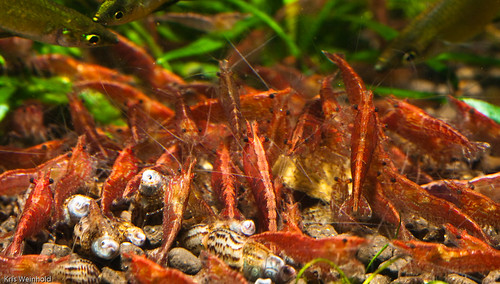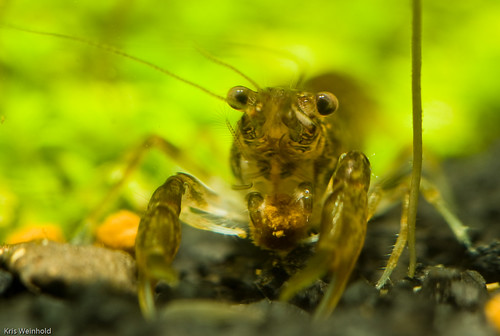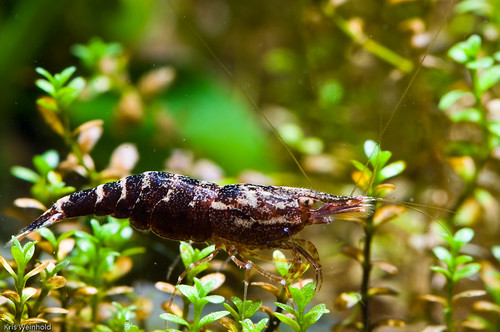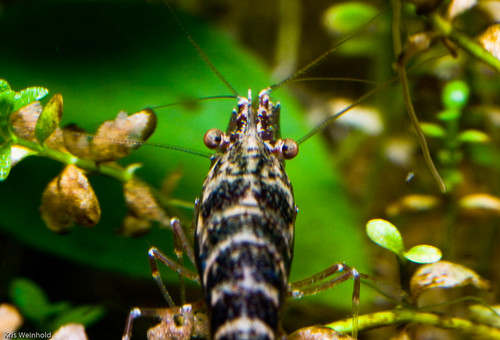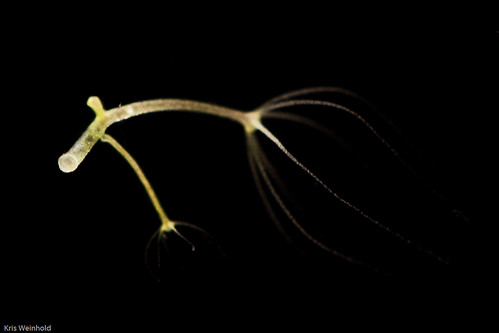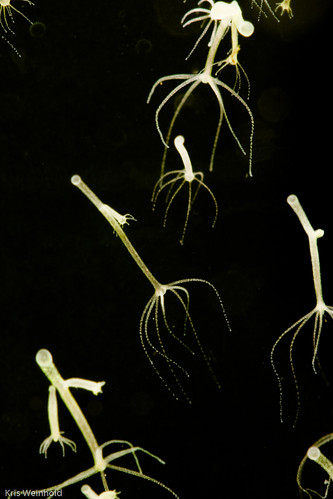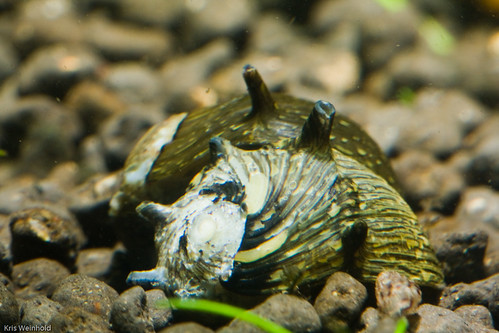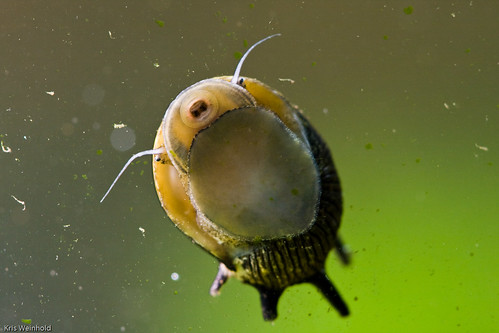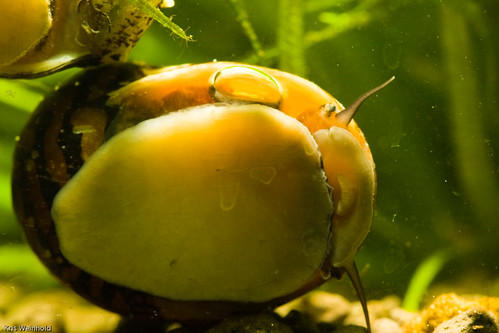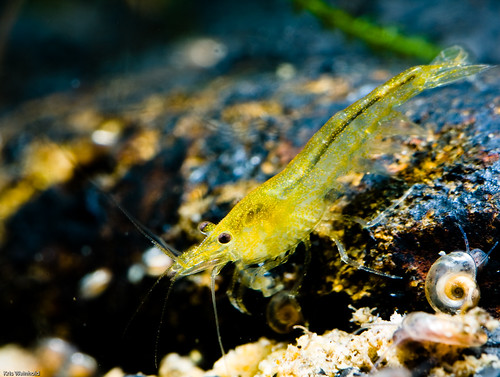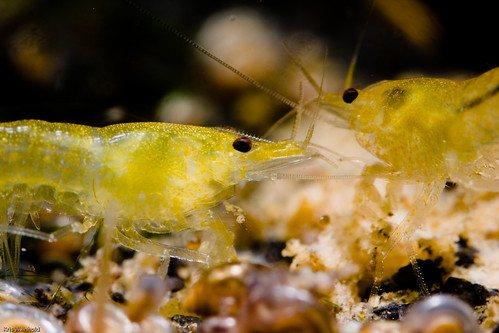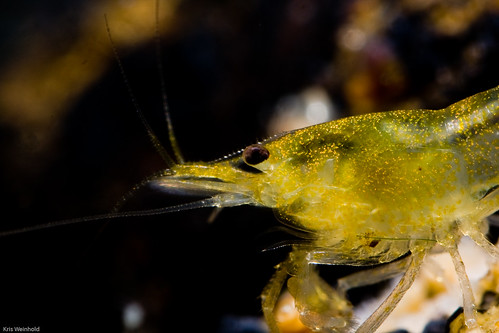Algae Eating Crew
April 30th, 2012Believe it or not, but this piece of African bogwood used to be completely covered by black brush algae (BBA). I got my act in order, and have been routinely dosing the tank for the past few months, cranked up the CO2, and added some extra Amano Shrimp and Zebra Nerite Snails. As a result, I’ve literally witnessed a daily receding of this BBA as the algae crew have fed.
What’s very interesting is that I still feed the catfish in this tank veggie wafers, but I guess either the catfish aren’t sharing, or the shrimp/snails prefer the BBA. I honestly believe that it’s the zebra nerites that are doing more BBA eating than anything else in the tank. I had never previously realized that zebra nerites had such an affection for BBA, but I’m quite pleased that the latest crew seem to enjoy it.
As I mentioned, I regularly feed algae wafers to the catfish in this tank. While the shrimp and nerites don’t seem to go after these provisions, the Malaysian Trumpet Snails cluster around the wafers. Today I watched one MTS slither over the back of a Red Lizard Catfish who was also yearn for some veggie goodness.
The take away is that in my tanks, algae is inevitable. I’m going to get lazy on my dosing, CO2 is going to run out, or I’ll let a filter go slightly too long between cleanings. It’s good to know that when this happens, I’ll get some help from Amano Shrimp and Zebra Nerite Snails to keep things looking decent. My laziness is their gain!
